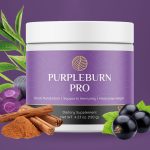Functional fitness is a transformative approach to exercise that has gained significant traction in recent years. Unlike traditional fitness regimes that often focus on isolated muscle groups, functional fitness emphasizes exercises that train your muscles to work together and prepare them for daily tasks. Functional fitness enhances your ability to perform everyday activities efficiently and effectively by mimicking real-world movements. This comprehensive guide delves deep into the principles, benefits, and essential exercises of functional fitness, offering actionable insights to enhance your physical health and overall well-being.
Functional fitness represents a holistic approach to physical training, prioritizing balanced strength, flexibility, endurance, and coordination. Unlike traditional gym workouts that rely on machines and focus on building muscle in specific areas, functional fitness engages multiple muscle groups through compound movements. These exercises involve several joints and muscle groups simultaneously, such as squatting, pulling, pushing, hinging, and carrying loads. The primary goal is to improve overall body function, ensuring that the strength and flexibility gained in the gym translate to better performance in daily activities.
One of the core components of functional fitness is mobility and flexibility, which are essential for reducing the risk of injury and enhancing performance. Exercises that improve mobility and flexibility help your muscles and joints move through their full range of motion, making everyday tasks more manageable. For instance, having good hip and ankle mobility can make climbing stairs or squatting to pick up objects from the floor much easier and more efficient.
Building strength and power is another critical aspect of functional fitness. Unlike traditional strength training, which often isolates specific muscles, functional fitness focuses on compound movements that involve multiple muscle groups. Exercises such as deadlifts, squats, and box jumps are excellent examples of functional strength training. These movements build muscle and improve your ability to generate force quickly, which is essential for daily activities that require bursts of power, such as lifting heavy objects or sprinting.
Stability and balance are also crucial in functional fitness. Exercises that challenge your strength and balance, such as single-leg movements and core exercises, help improve your overall body control. Stability exercises engage your core muscles, enhancing your ability to maintain proper posture and perform everyday activities without discomfort or injury. Improved balance reduces the risk of falls and injuries, which is particularly important for older adults.
Endurance and stamina are other vital components of functional fitness. High-intensity interval training (HIIT) and circuit training are popular methods to boost endurance and stamina. These workouts involve short bursts of intense activity followed by brief recovery periods, mimicking the physical demands of daily life. Improved endurance allows you to sustain physical activity for extended periods, making tasks like long walks, hikes, or even playing with children less tiring.
Coordination is another fundamental principle of functional fitness. Effective coordination helps you use multiple body parts together seamlessly, crucial for performing complex movements in everyday life. Functional fitness exercises often require precise, coordinated movements that engage various muscle groups and joints, improving overall motor skills.
The benefits of functional fitness extend beyond physical health. Regular functional fitness workouts can significantly reduce stress and improve mental well-being. Physical activity stimulates the production of neurotransmitters and feel-good hormones, such as endorphins, which elevate mood and enhance overall mental health. Moreover, functional fitness often occurs in group settings, fostering social connections and providing a supportive community. This social aspect is particularly beneficial for older adults who may experience loneliness or isolation.
Functional fitness is highly adaptable and can be tailored to various specific goals. Whether you aim to lose weight, build strength, or maintain agility as you age, functional fitness can play a vital role in achieving these objectives. For example, functional fitness workouts that combine strength training and high-intensity cardio are highly effective for weight loss. These workouts burn many calories while building lean muscle mass, positively changing body composition. For athletes, functional fitness can enhance performance by incorporating exercises that mimic the specific demands of their sport. Older adults can benefit from functional fitness by focusing on exercises that maintain strength, balance, and mobility, reducing the risk of falls and enhancing their ability to perform daily activities independently.
CrossFit is one of the most popular and well-known forms of functional fitness. This high-intensity fitness program combines weightlifting, gymnastics, and cardio to improve overall strength, endurance, and conditioning. CrossFit workouts, often called WODs (Workouts of the Day), are designed to prepare the body for any physical challenge. The unpredictable nature of CrossFit training ensures that participants develop a well-rounded set of fitness skills, making them ready for any scenario.
Strength and conditioning (S&C) is another comprehensive training approach that aligns well with functional fitness principles. Initially designed for athletes, S&C focuses on improving performance through resistance training, plyometrics, and cardio-based elements. This training style is excellent for functional fitness as it incorporates movements that replicate real-world activities, such as lifting, jumping, and sprinting. S&C programs are now widely accessible and popular among the general population, particularly emphasizing strength training for women.
Hyrox is a newer fitness competition combining running and functional workout stations to test physical and mental strength. Unlike CrossFit, Hyrox workouts are consistent, comprising eight 1km runs and eight functional exercises, including SkiErg, sled push, and sandbag lunges. Hyrox's structured format is excellent for individuals who challenge themselves with a predictable yet demanding workout.
High-Intensity Interval Training (HIIT), sometimes referred to as High-Intensity Functional Training (HIFT), is another popular functional fitness method. HIIT workouts involve short bursts of intense exercise followed by brief recovery periods. This training style effectively improves cardiovascular fitness, burns calories, and builds lean muscle mass. Combining high-intensity intervals and functional movements makes HIIT an efficient and effective workout option for individuals with busy schedules.
Though not typically associated with functional fitness, yoga, and Pilates can be valuable additions to a functional training routine. Both practices emphasize body awareness, core stability, and flexibility, essential components of functional fitness. Incorporating elements of yoga and Pilates into a functional fitness routine can help create a well-rounded approach to physical conditioning, improving posture, balance, and overall body control.
Essential functional fitness exercises are designed to mimic real-world movements, making daily activities more accessible and more efficient. The squat is one of the most fundamental functional movements, targeting the lower body and core. Squats can be performed in various forms, such as the barbell back squat, front squat, and goblet squat, each offering unique benefits and challenges. These exercises strengthen the quadriceps, hamstrings, glutes, abs, lower back, and stabilizing muscles, enhancing your ability to perform tasks like lifting, climbing stairs, and standing down and standing up efficiently.
Hinge exercises, another crucial component of functional fitness, primarily target the posterior chain, including the hamstrings, glutes, calves, lower back, and upper back. The deadlift, often called the king of strength exercises, is a core hinge move that prepares you for real-world activities involving lifting objects from the ground. Other hinge exercises, such as kettlebell swings and Romanian deadlifts, enhance posterior chain strength and stability.
Push exercises, such as push-ups, overhead presses, and bench presses, target the chest, shoulders, and triceps. These movements are essential for building upper body strength and improving your ability to perform pushing actions in daily life, such as making a door open or lifting objects overhead. Pull exercises, including pull-ups, rows, and lat pulldowns, target the back, biceps, and rear shoulders, enhancing your ability to pull, such as opening a heavy door or lifting a suitcase.
Incorporating functional fitness into your routine requires thoughtful programming considering your current fitness level and specific goals. It's essential to start with a comprehensive fitness assessment and set realistic objectives. Working with a qualified functional fitness coach or trainer can help you design a personalized program tailored to your needs and abilities. As you progress, gradually increase the intensity and complexity of your workouts by adding more weight, performing advanced exercise variations, or increasing the number of reps and sets. Prioritize proper form and technique to minimize the risk of injury and maximize the effectiveness of your workouts.
Functional fitness and traditional strength training share some similarities but distinct differences. While strength training typically focuses on isolating specific muscle groups and building maximal strength through core lifts like the bench press, squat, and deadlift, functional fitness emphasizes training the body. Functional fitness involves multiple movement planes to improve physical performance and simulate real-world movements. Muscular endurance, mobility, and coordination are critical in functional fitness, setting it apart from traditional strength training. However, functional fitness programs often incorporate elements of strength training, such as heavy lifts and progressive overload, to build the necessary strength and power for optimal physical performance.
Functional fitness can also be highly effective for managing chronic pain and reducing the risk of injury. By training your muscles to work together efficiently and improving overall body awareness, functional fitness can help alleviate back, knee, neck, and joint pain. This style is between physical therapy and personal training, offering regenerative benefits that restore the body's natural function. Additionally, functional fitness strengthens soft tissue ligaments surrounding the muscles, reducing the likelihood of injuries.
As you embark on your functional fitness journey, it's crucial to maintain a balanced approach that incorporates various types of exercise, including strength training, cardio, and flexibility work. This comprehensive approach ensures that all aspects of your physical health are addressed, improving overall performance and well-being. Functional fitness is not just about building muscle or improving endurance; it's about enhancing your ability to perform daily tasks easily and efficiently, ultimately leading to a higher quality of life.
In conclusion, functional fitness is a versatile and practical approach to physical training that offers numerous benefits for individuals of all ages and fitness levels. Functional fitness improves strength, flexibility, endurance, balance, and coordination by focusing on compound movements that mimic real-world activities. This holistic approach to fitness enhances your ability to perform everyday tasks, reduces the risk of injury, and promotes overall physical and mental well-being. Whether you're looking to lose weight, build strength, or maintain agility as you age, functional fitness can help you achieve your goals and improve your quality of life.
For those passionate about health and fitness and looking to help others experience the benefits of functional fitness, a personal trainer or fitness instructor career can be incredibly rewarding. The Fitness Group offers a range of CIMSPA-recognized personal training courses, including their Level 2 Gym Instructor course, which requires no previous qualifications. Their specialist courses, such as the pre- and postnatal, instructing kettlebell courses, and strength and conditioning personal trainer courses, can further enhance your expertise and enable you to cater to a wide range of clients.
To learn more about functional fitness and its benefits, visit The Fitness Group. Explore their resources and training programs to start your journey towards a healthier, more functional life.











